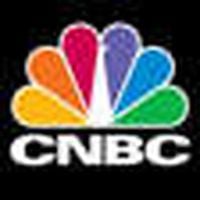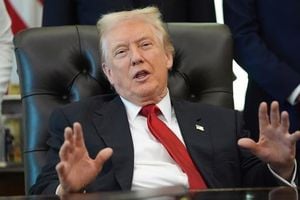As the Federal Reserve approaches its next pivotal meeting in September, a swirl of opinions and uncertainties is shaping the debate over the future path of U.S. interest rates. On August 15, 2025, Chicago Federal Reserve President Austan Goolsbee voiced what he called a "note of unease," citing a recent batch of mixed inflation data and ongoing uncertainty surrounding tariffs. According to CNBC, Goolsbee—one of the 12 voting members of the Federal Open Market Committee (FOMC) this year—made it clear that he is not yet convinced the time is right for a rate cut.
Goolsbee has long championed what he describes as a "golden path" for the U.S. economy: a scenario where moderating inflation aligns with a stable labor market, paving the way for lower interest rates without risking economic instability. But with the latest consumer and producer price reports offering a muddled picture, Goolsbee told CNBC, "I still want to see some more convincing data before the Federal Open Market Committee meets on Sept. 16-17." His caution comes at a critical moment, as markets and policymakers alike weigh the risks of moving too soon—or too late—on monetary policy.
Meanwhile, the chorus of voices calling for more aggressive action is growing louder. On August 14, 2025, David Zervos, a Wall Street veteran and chief market strategist at Jefferies, reiterated his call for a significant cut in the federal funds rate. During his own CNBC interview, Zervos argued that the central bank is "past due" in approving a reduction, and he specifically advocated for a half percentage point cut. This position is not new for Zervos, who has consistently pushed for such a move over the past three Fed meetings.
What’s fueling Zervos’s sense of urgency? Despite the July 2025 producer price index (PPI) showing hotter-than-expected pipeline inflation pressures, Zervos maintains that monetary policy remains too restrictive. "I'm still absolutely there. I think there is a reasonable storyline, a very cogent storyline, that suggests monetary policy is restrictive," he said. "Generally speaking, I don't see any reason why this [PPI] number changes that view." His argument is rooted in the belief that the U.S. economy is facing disinflationary pressures, particularly from advances in artificial intelligence, technology, and broader supply-side developments.
Zervos is not alone in his assessment. The list of potential successors to current Fed Chair Jerome Powell, whose term expires in 2026, has recently expanded to nearly a dozen names. Zervos joins a field that includes current and former Fed officials, at least one Trump administration advisor, and several prominent Wall Street economists. Notably, Zervos and BlackRock bond strategist Rick Rieder stand out as candidates with deep market backgrounds rather than purely academic or policy credentials.
For Zervos, this market-savvy perspective is precisely what the Fed needs. "I think it would be an incredible benefit to have more market-savvy, more market-competent people involved in the monetary policy decision," he told CNBC. His comments echo a broader sentiment among some investors and analysts who argue that the central bank’s approach has been too conservative, especially in an era of rapid technological change and shifting global dynamics.
Economist Marc Sumerlin, another finalist for the Fed’s top job, has also advocated for a half-point cut, contending that the central bank has erred on the side of caution in its fight against inflation. This push for lower rates finds a powerful ally in former President Donald Trump, who has repeatedly pressed the Fed to act more aggressively. Trump has gone so far as to suggest slashing up to 300 basis points—or 3 percentage points—from the current federal funds rate, which hovers around 4.33%.
Zervos, while not fully endorsing Trump’s extreme proposal, indicated some openness to a substantial reduction. "I don't know that I could get all the way to 300, but I certainly could get to 200 and I could be convinced on lower than that if you really push the AI story and the technology story and the idea that we have disinflationary pressures building from a supply-side narrative," he explained. In other words, if technological advancements continue to drive down costs and boost productivity, the case for lower rates could become even stronger.
Yet, the political dimension of the Fed’s decision-making process is impossible to ignore. Zervos acknowledged the challenges that come with the territory, especially as the central bank finds itself in the crosshairs of both Wall Street and Washington. "You go into that job fully understanding that you're involved in the political process," he said. "The goal is to have the debate be driven by facts and be driven by what is best for achieving the mandates that Congress sets out." Those mandates, of course, are to promote maximum employment and stable prices—a balancing act that has rarely been more delicate.
For Goolsbee and his colleagues on the FOMC, the next few weeks will be crucial. The committee’s September 16-17 meeting looms large, and the incoming data on inflation, employment, and global trade will be scrutinized for any signs of a clear trend. The uncertainty over tariffs adds yet another layer of complexity, as policymakers try to gauge the ripple effects on prices, supply chains, and consumer sentiment.
As the debate intensifies, the stakes for the broader economy are high. A premature rate cut could reignite inflation just as it appears to be cooling, while waiting too long could stifle growth and risk tipping the economy into recession. The divergent views of Goolsbee and Zervos capture the tension at the heart of the Fed’s current dilemma: how to navigate a path that supports continued expansion without fueling the very inflation the central bank is tasked with controlling.
In the end, the outcome will hinge on the data—and on the willingness of policymakers to adapt as circumstances evolve. Whether the Fed opts for caution or boldness, the decisions made in the coming weeks will reverberate far beyond the walls of the Marriner S. Eccles building. For now, all eyes are on the numbers, the policymakers, and the unpredictable forces shaping the world’s largest economy.




